Tiny Houses
How Is Tiny House Living Beneficial for a Sustainable and Minimalist Lifestyle?

Are you ready to simplify your life and embrace a sustainable and minimalist lifestyle?
Join us on a journey to discover the practical benefits of tiny house living. With our allusion to the joys of downsizing, we’ll explore how living in a tiny house can help you reduce your environmental impact and achieve a more intentional way of life.
From finding the perfect spot to navigating building codes, we’ll provide you with the knowledge and practical tips you need to embark on this fulfilling journey.
Key Takeaways
- Tiny house living promotes sustainable design and minimizing waste.
- Downsizing creates space for what truly matters in life, prioritizing experiences and relationships.
- Financial benefits of tiny house living include reduced expenses and the ability to save money.
- Creative storage solutions and multi-functional furniture maximize space and functionality in a tiny house.
The Practical Benefits of Tiny House Living
We have found that one of the most practical benefits of tiny house living is in the ability to maximize limited space. Space optimization is essential when living in a small area, and tiny houses excel in providing clever solutions to make the most out of every square inch. From multi-functional furniture to creative storage solutions, every aspect of a tiny house is designed to serve a purpose and maximize functionality. This not only allows for a clutter-free and organized living space but also encourages a minimalist lifestyle.
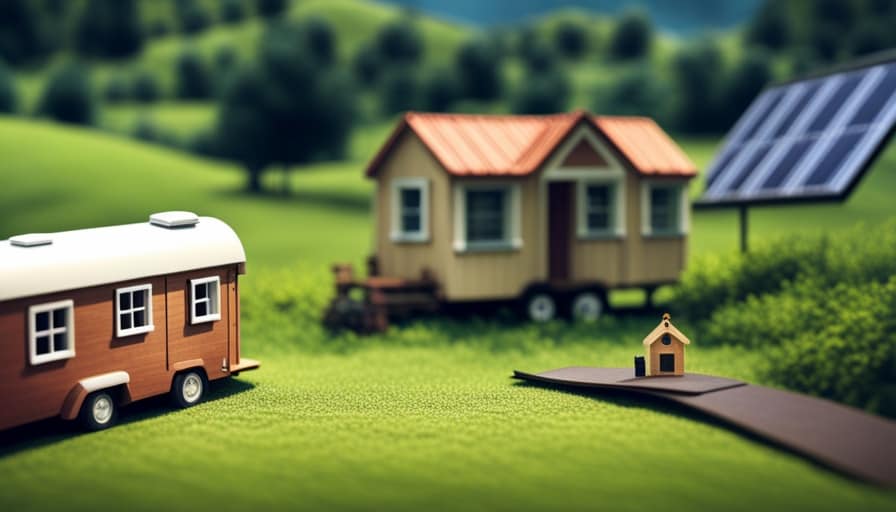
Another significant advantage of tiny house living is the financial freedom it offers. By reducing expenses such as mortgage payments, utility bills, and maintenance costs, living in a tiny house can save a substantial amount of money. This financial relief can allow individuals and families to allocate their resources towards more fulfilling experiences, such as travel, education, or pursuing their passions. In a world where material possessions often weigh us down, tiny house living can provide an opportunity to prioritize experiences over belongings and embrace a more sustainable and minimalist lifestyle.
The Process of Downsizing for a Minimalist Lifestyle
The process of downsizing for a minimalist lifestyle can be a transformative experience. By minimizing material possessions, we open ourselves up to a multitude of benefits that come with embracing minimalism.
When we let go of unnecessary belongings, we create space for what truly matters in our lives. This process allows us to prioritize experiences and relationships over material possessions, leading to a greater sense of fulfillment and contentment.
Moreover, downsizing helps us become more intentional with our consumption habits and reduces our impact on the environment. By choosing quality over quantity and focusing on what truly brings us joy, we can simplify our lives and reduce waste.

Ultimately, the process of downsizing for a minimalist lifestyle empowers us to live more intentionally and align our actions with our values.
Embracing Sustainable Living in a Tiny House
Living in a tiny house allows us to fully embrace sustainable living practices and reduce our ecological footprint. Sustainable design and minimizing waste are key principles in this lifestyle. By maximizing the use of space, tiny houses encourage us to be mindful of our consumption patterns and limit unnecessary material possessions. This not only reduces our impact on the environment but also promotes a minimalist mindset.
In a tiny house, every square inch counts. Furniture and storage solutions are often multifunctional, serving multiple purposes to maximize efficiency. Additionally, sustainable materials such as reclaimed wood, recycled materials, and energy-efficient appliances are commonly used in tiny house construction. These choices contribute to a more eco-friendly lifestyle.
To further illustrate the benefits of sustainable living in a tiny house, let’s look at the following table:
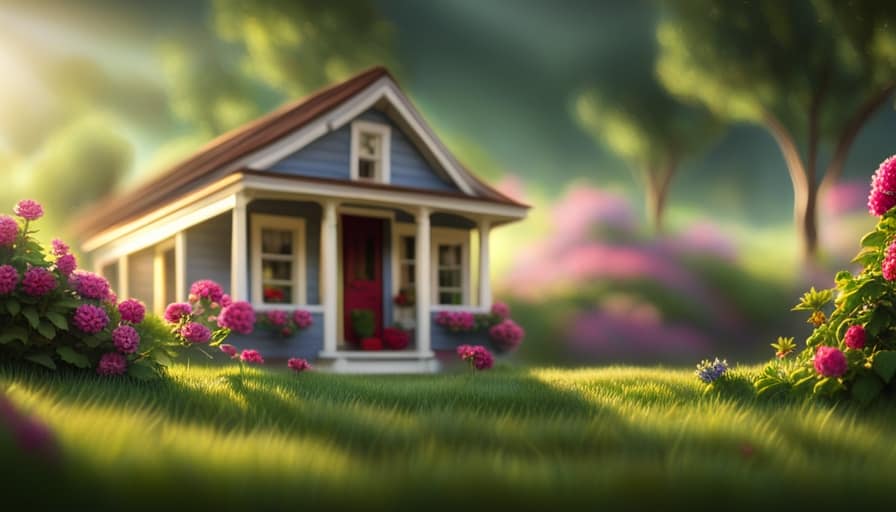
| Sustainable Design | Minimizing Waste |
|---|---|
| Use of renewable energy sources | Composting toilet |
| Rainwater harvesting system | Recycling and upcycling |
| Passive solar design | Minimal packaging |
| Efficient insulation and ventilation | Reduction of food waste |
| Use of low-flow fixtures | Avoidance of single-use plastics |
Embracing sustainable living in a tiny house not only allows us to live more consciously but also sets an example for others to follow. It is a practical and fulfilling way to contribute to a more sustainable future for ourselves and the planet.
Spot Selection: Finding the Perfect Location for Your Tiny House
Finding the ideal spot for our tiny house involves careful consideration of factors such as zoning regulations, access to amenities, and proximity to nature.
When it comes to off-grid living, maximizing self-sufficiency in a tiny house requires finding a location that allows for alternative energy sources, such as solar panels or wind turbines.
Additionally, being part of a tiny house community can provide a sense of belonging and support. Joining a tiny house village allows for shared resources, collaboration, and the opportunity to connect with like-minded individuals.

It’s important to research and visit different locations to ensure they align with our values and lifestyle goals. By selecting the perfect spot for our tiny house, we can create a sustainable and minimalist lifestyle that fosters self-sufficiency and community involvement.
In the next section, we’ll explore building codes and eco-friendly materials for tiny house construction.
Building Codes and Eco-Friendly Materials for Tiny House Construction
For our tiny house construction, we need to research and comply with building codes, as well as choose eco-friendly materials to ensure sustainability and minimize our environmental impact.
Building code regulations vary from one location to another, so it’s important to familiarize ourselves with the specific requirements in our area. These regulations typically cover aspects such as minimum square footage, ceiling heights, stair dimensions, and electrical and plumbing systems. By adhering to these codes, we can ensure the safety and structural integrity of our tiny house.

Additionally, opting for eco-friendly materials is crucial for an energy-efficient design. Materials such as reclaimed wood, recycled insulation, and low VOC paints can significantly reduce our carbon footprint while also promoting a healthier living environment.
It’s essential to prioritize sustainability and minimize our impact on the planet when constructing our tiny house.
Frequently Asked Questions
How Much Does It Cost to Build a Tiny House?
Building a tiny house can cost anywhere from $10,000 to $100,000, depending on factors like size, materials, and location. Financing options such as personal loans or RV loans can help make this sustainable and minimalist lifestyle more accessible.
What Are the Legal Requirements for Living in a Tiny House?
Legal requirements for living in a tiny house include navigating through various zoning regulations and complying with local building codes. It’s important to research and understand these restrictions to ensure a smooth and legal transition into tiny house living.

Can I Still Have a Comfortable Lifestyle in a Tiny House?
Yes, we can still have a comfortable lifestyle in a tiny house by focusing on home organization and maximizing space. With thoughtful design and efficient use of resources, we can create a cozy and functional living environment.
How Do I Handle Waste Management in a Tiny House?
When it comes to waste management in a tiny house, we’ve found that composting toilets and recycling solutions are key. These sustainable options allow us to minimize our environmental impact and live a more minimalist lifestyle.
What Are the Long-Term Maintenance Considerations for a Tiny House?
When considering long-term maintenance for a tiny house, it is important to prioritize sustainable design and energy efficiency. Regular inspections, proper insulation, and efficient systems will help ensure the longevity of the home while minimizing environmental impact.
Conclusion
In conclusion, living in a tiny house offers numerous benefits for those seeking a sustainable and minimalist lifestyle.
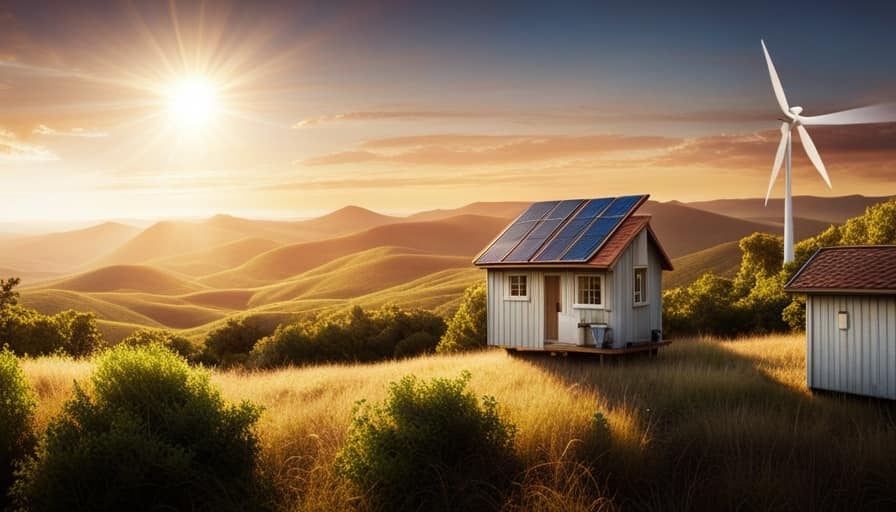
From the practical advantages of downsizing and simplifying our lives to the embrace of eco-friendly materials and sustainable living practices, tiny house living allows us to lead a more intentional and conscious way of life.
So, if you’re ready to embark on this exciting journey, start exploring the possibilities of tiny house living and experience the fulfillment of a more sustainable and minimalist lifestyle.
I’m Theodore, and I love tiny houses. In fact, I’m the author of Tiny House 43, a book about tiny houses that are also tree houses. I think they’re magical places where imaginations can run wild and adventures are just waiting to happen.
While tree houses are often associated with childhood, they can be the perfect adult retreat. They offer a cozy space to relax and unwind, surrounded by nature. And since they’re typically built on stilts or raised platforms, they offer stunning views that traditional homes simply can’t match.
If you’re looking for a unique and romantic getaway, a tree house tiny house might just be the perfect option.
Tiny Houses
What Makes Tiny House Rentals an Intriguing Option for Vacation Getaways?
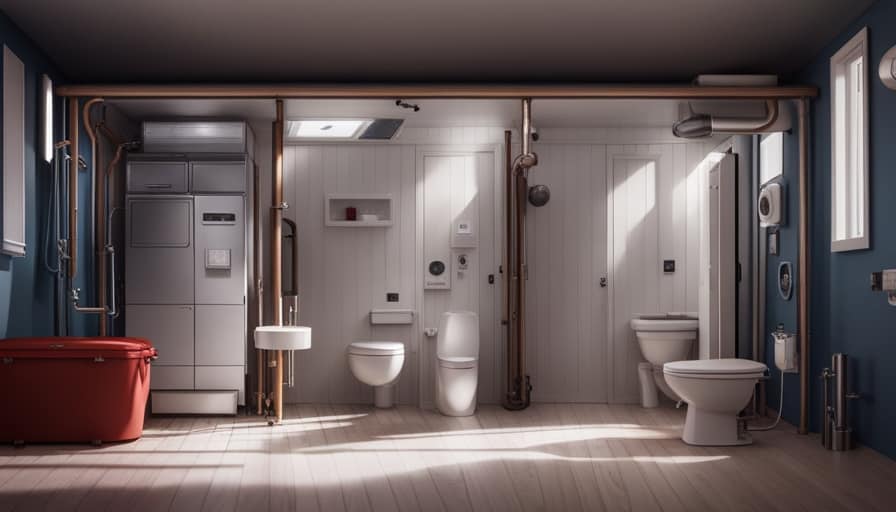
Upon initial inspection, the concept of vacationing in a tiny house might appear insignificant. Nevertheless, we can guarantee that this distinctive lodging choice is a concealed treasure eagerly awaiting exploration.
Tiny house rentals offer a cozy and intimate experience, allowing us to escape the hustle and bustle of everyday life. With their clever design and eco-friendly features, these pint-sized retreats are an intriguing choice for those seeking a memorable getaway.
Key Takeaways
- High market demand for unique and affordable vacation accommodations
- Potential return on investment and revenue streams in the tiny house rental market
- Sustainable features of tiny houses attracting environmentally-conscious travelers
- Ability to charge higher rates per night compared to traditional accommodations
Legal Considerations for Tiny House Rentals
We should be aware of the legal considerations for tiny house rentals. When venturing into the world of tiny house rentals, it’s crucial to understand the legal obligations that come with it.
Maximizing profitability in this market requires not only providing a unique and comfortable experience for guests but also ensuring compliance with local regulations. Before setting up your tiny house rental business, it’s essential to familiarize yourself with zoning laws, building codes, and permits required in your area.

Additionally, you must consider liability insurance and the need for clear rental agreements to protect both you and your guests. By staying informed about the legal landscape, you can confidently navigate the tiny house rental market and avoid any potential legal pitfalls.
Now that we’ve covered the legal considerations, let’s explore the exciting business opportunities in the tiny house rental market.
Exploring Business Opportunities in the Tiny House Rental Market
As we continue to explore the intriguing world of tiny house rentals, it’s important to consider the business opportunities that this market presents.
One key point to discuss is the high market demand for tiny houses, fueled by the growing interest in minimalist living and unique vacation experiences.
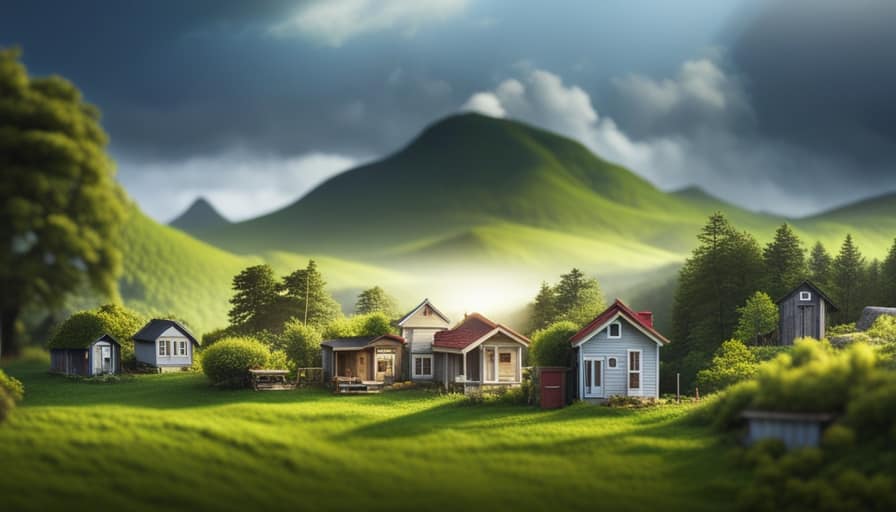
Additionally, we should examine the profitability of tiny house rentals, analyzing the potential return on investment and the various revenue streams that can be generated.
Lastly, we should address the challenges that come with managing rentals, such as maintenance, marketing, and ensuring a positive guest experience.
Market Demand for Tiny Houses
There are numerous business opportunities in the tiny house rental market due to the increasing market demand. Market trends show that more and more people are seeking unique and affordable vacation accommodations. Tiny houses offer a perfect solution to these customer preferences, providing a cozy and eco-friendly space for a memorable getaway.
Here are three reasons why the market demand for tiny houses is on the rise:
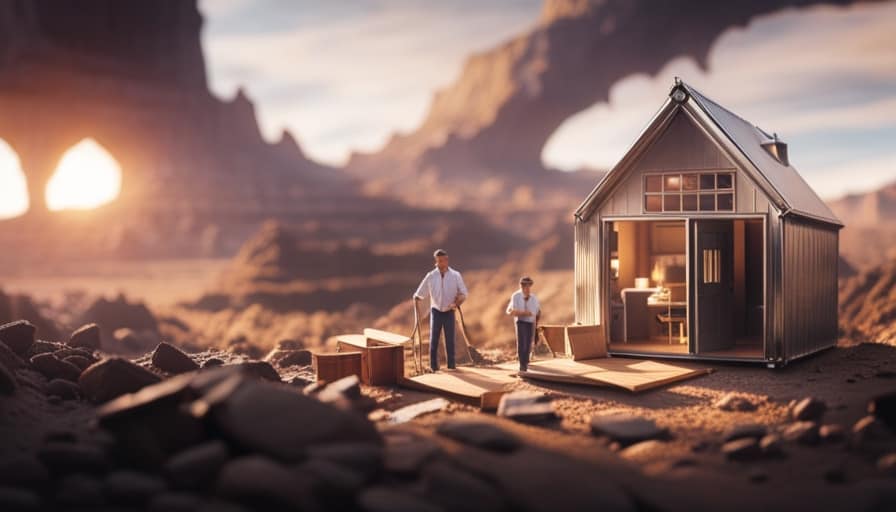
-
Flexibility: Tiny houses can be placed in various locations, from serene countryside settings to bustling urban areas, giving customers the freedom to choose their desired destination.
-
Sustainability: With a growing concern for the environment, many customers are drawn to the sustainable features of tiny houses, such as solar panels and composting toilets.
-
Minimalism: In a world filled with material possessions, the simplicity and minimalist design of tiny houses offer a refreshing escape for those seeking a more meaningful vacation experience.
With the increasing market demand for tiny houses, exploring the profitability of tiny house rentals becomes an essential aspect to consider.
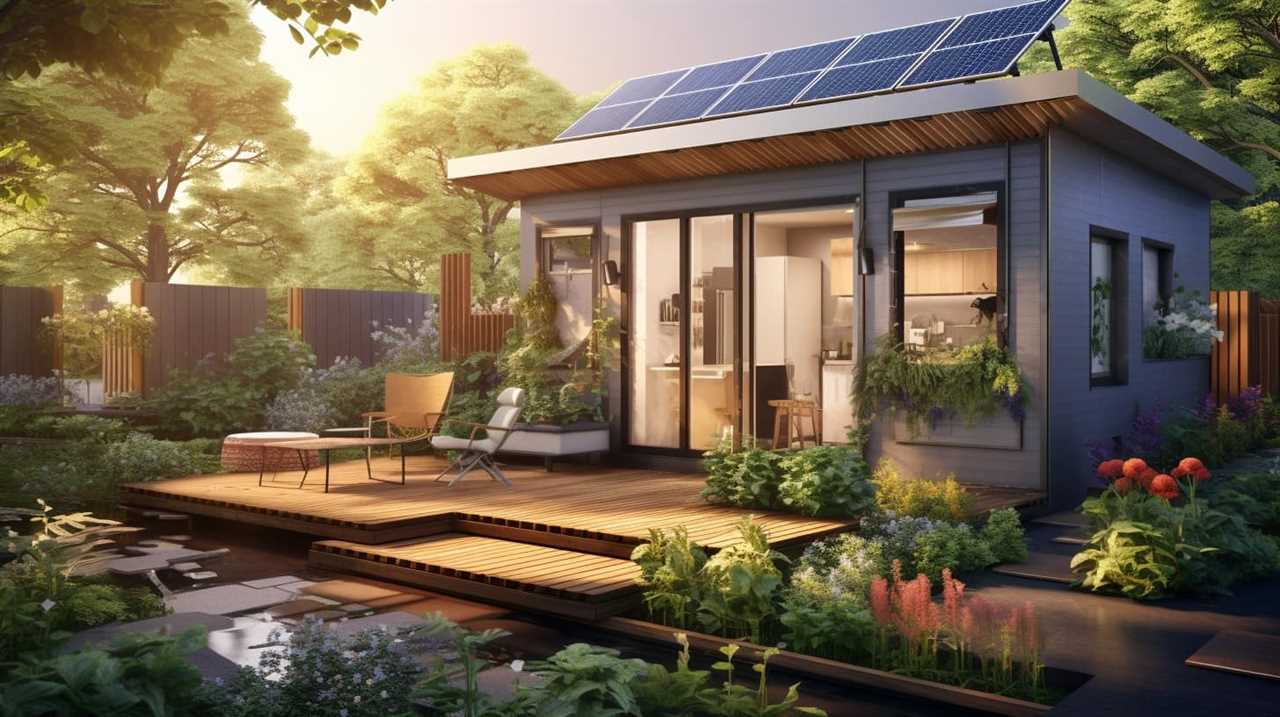
Profitability of Tiny House Rentals
Let’s explore the potential profitability of renting out tiny houses and the various business opportunities that arise in the growing market.
Tiny house rentals can be a lucrative venture, with the ability to maximize revenue and attract guests in unique ways. One of the main advantages of tiny house rentals is the ability to charge higher rates per night compared to traditional accommodations. Guests are often willing to pay a premium for the experience of staying in a cozy and well-designed tiny house.
Additionally, with the rising popularity of eco-tourism and sustainable travel, tiny houses offer an attractive option for environmentally-conscious travelers. Furthermore, the flexibility of tiny houses allows for creative business opportunities such as hosting workshops, retreats, or even offering tiny house design and construction services.
With the high demand for unique and memorable vacation experiences, the tiny house rental market presents an exciting opportunity for entrepreneurs. However, managing these rentals does come with its own set of challenges.
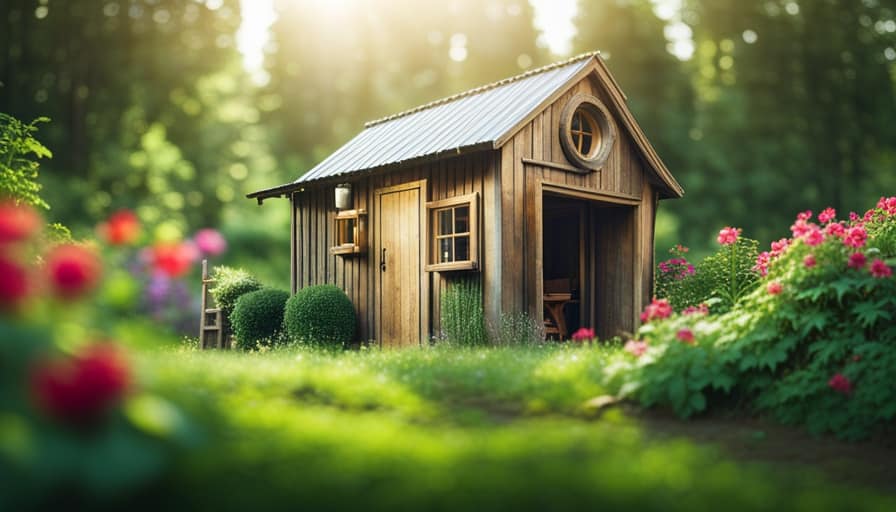
Challenges in Managing Rentals?
Managing rentals in the tiny house rental market can be quite challenging, but it also presents exciting business opportunities.
As the demand for unique vacation experiences grows, so do the challenges in marketing and ensuring customer satisfaction.
Here are some key challenges to consider in managing tiny house rentals:
-
Limited space: With tiny houses, space is a premium. It can be challenging to optimize the layout and provide enough storage for guests’ belongings while still maintaining a comfortable living environment.

-
Maintenance and cleanliness: Keeping tiny houses in top condition requires regular maintenance and cleaning. The small size can make it difficult to access certain areas, making it crucial to have a dedicated team to ensure the cleanliness and functionality of every rental.
-
Communication and coordination: With multiple tiny houses to manage, effective communication and coordination become vital. Ensuring that guests receive timely responses to their inquiries and that check-ins and check-outs run smoothly is essential for customer satisfaction.
Despite these challenges, managing tiny house rentals offers unique business opportunities for entrepreneurs willing to provide exceptional experiences for their guests.
Effective Marketing Strategies for Tiny House Rentals
When marketing our tiny house rentals, we need to consider effective strategies to attract potential vacationers. One important aspect is identifying our target audience. Are we catering to adventurous couples, families with children, or solo travelers? Understanding our audience helps us tailor our marketing efforts to their specific needs and desires.
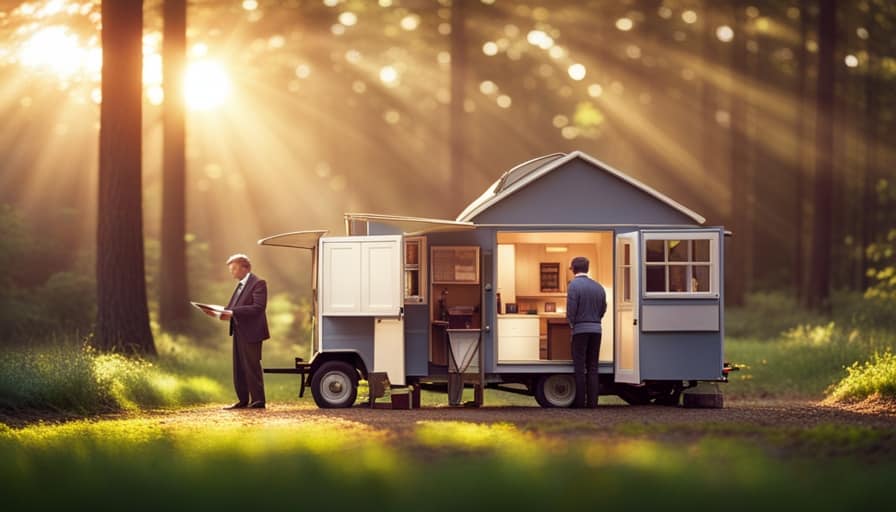
Online advertising is a powerful tool in reaching our target audience. We can utilize social media platforms, online travel websites, and vacation rental platforms to showcase our unique offerings and attract attention. Eye-catching photos, compelling descriptions, and positive reviews can entice vacationers to choose our tiny house rentals over other options.
Enhancing Customer Experience in Tiny House Rentals
As owners of tiny house rentals, we strive to continuously enhance the customer experience by providing exceptional amenities and personalized services during our guests’ stay. We understand that customer satisfaction is of utmost importance, and we take great pride in creating a memorable and enjoyable stay for every guest.
Here are a few ways we enhance the customer experience in our tiny house rentals:
- Thoughtfully designed interiors that combine functionality with style, creating a cozy and welcoming atmosphere.
- Attention to detail in every aspect, from comfortable bedding and plush towels to well-equipped kitchens and modern entertainment systems.
- Personalized touches such as welcome baskets, local recommendations, and prompt communication to ensure our guests feel valued and cared for.
By focusing on customer satisfaction and investing in well-designed interior spaces, we aim to create a truly unforgettable experience for our guests.
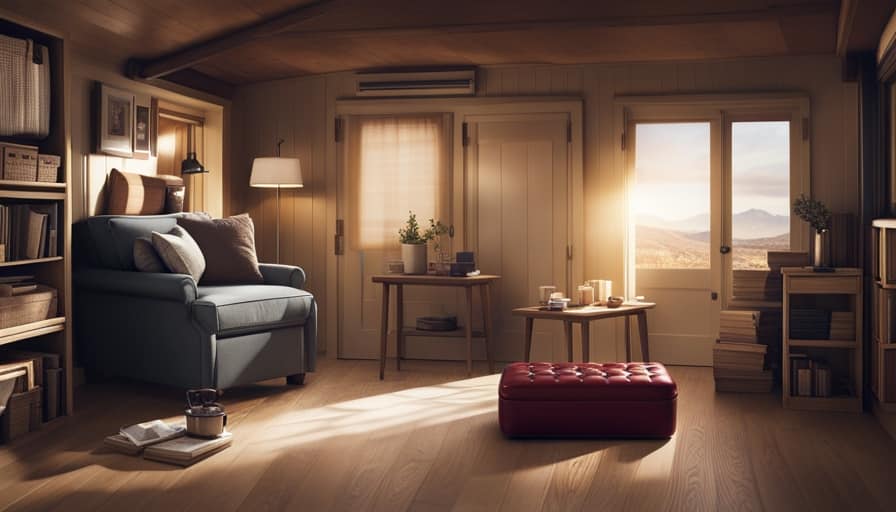
Now, let’s move on to discussing essential maintenance tips for tiny house rentals.
Essential Maintenance Tips for Tiny House Rentals
When it comes to maintaining tiny house rentals, there are a few key points to keep in mind.
Firstly, preventing structural wear is crucial to ensure the longevity of the property.
Secondly, efficient space utilization is essential for maximizing the comfort and functionality of the tiny house.
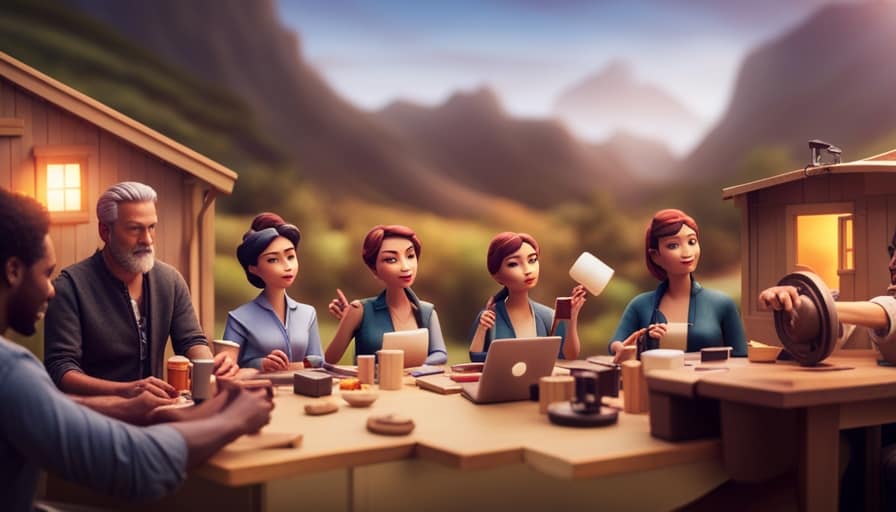
Lastly, keeping utilities functional is necessary to provide a seamless experience for guests.
Preventing Structural Wear
To prevent structural wear in our tiny house rentals, we should follow these essential maintenance tips:
-
Regularly inspect the foundation and walls for any signs of cracks or damage. Promptly address any issues to prevent further deterioration.
-
Keep the roof in good condition by checking for leaks, loose shingles, or any other damage. Repair or replace as necessary to prevent water damage.
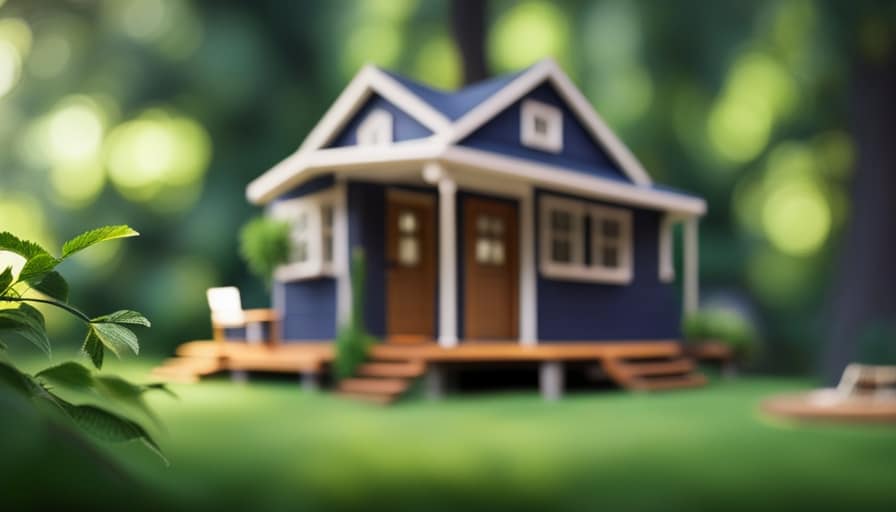
-
Maintain the plumbing system by checking for leaks, ensuring proper drainage, and regularly cleaning drains to avoid clogs.
By following these maintenance tips, we can ensure that our tiny house rentals remain in optimal condition for our guests’ enjoyment.
Preventing structural damage and maintaining rental properties not only enhances the overall experience for our guests, but it also helps us provide a safe and comfortable environment for them to relax and unwind during their vacation getaway.
Efficient Space Utilization
With careful planning and a little creativity, we can maximize the use of space in our tiny house rentals, ensuring that our guests have a comfortable and functional living area.
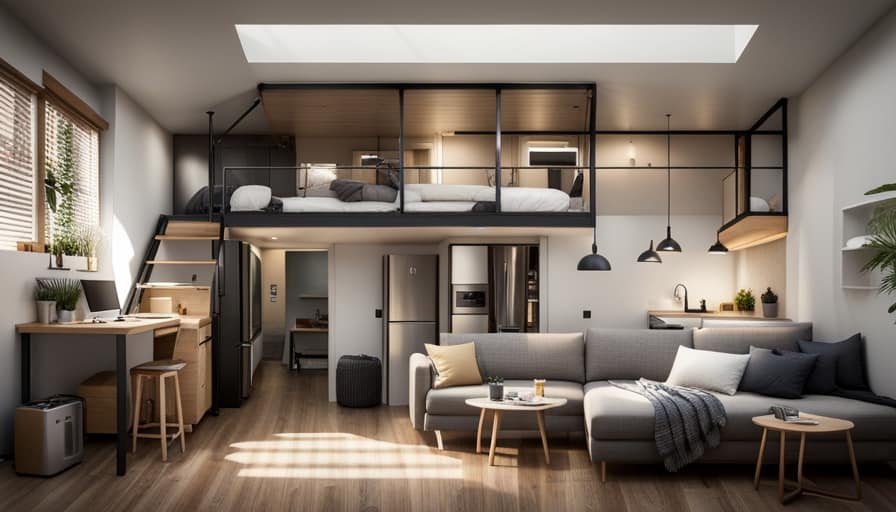
One key strategy is to incorporate space-saving furniture. For example, bunk beds can be a great option, allowing multiple guests to sleep in the same area without taking up too much floor space.
Another idea is to use foldable tables and chairs that can be easily stored away when not in use.
Additionally, maximizing storage is essential in tiny houses. Installing shelves and cabinets in unused vertical spaces can help keep belongings organized and out of the way.
Utilizing space under stairs and beds for storage is also a smart idea.
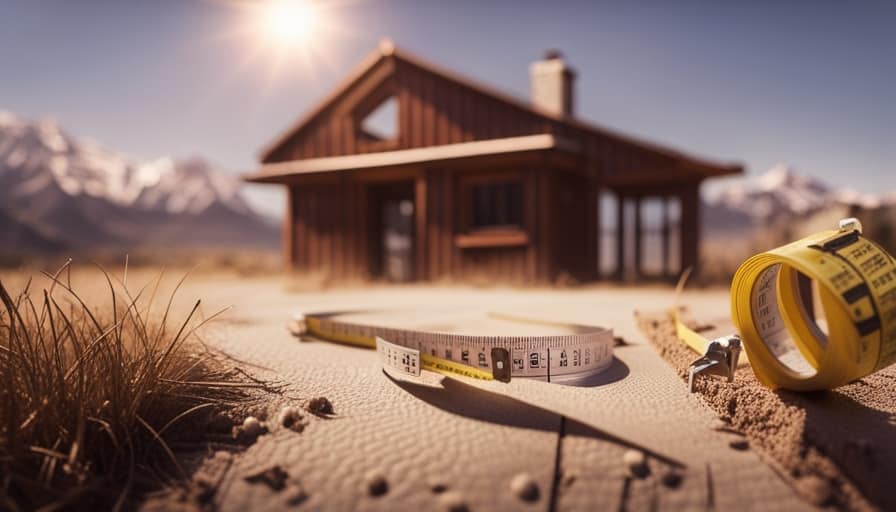
Keeping Utilities Functional
We can ensure that our tiny house rentals have functional utilities by regularly maintaining them and taking the necessary steps to prevent any issues from arising. Here are some essential maintenance tips to keep the utilities in top shape:
- Regularly inspect and clean the plumbing system to prevent clogs and leaks.
- Check the electrical wiring and outlets for any signs of damage or malfunction.
- Maintain the heating and cooling systems by cleaning or replacing filters regularly.
By following these maintenance tips, we can ensure that our guests have a comfortable and hassle-free experience during their stay.
Additionally, it’s important to keep in mind the legal requirements and eco-friendly options when it comes to utilities. Adhering to local regulations and implementing energy-saving measures can’t only reduce costs but also contribute to a sustainable environment.
Now, let’s move on to discussing pricing strategies for successful tiny house rentals.

Pricing Strategies for Successful Tiny House Rentals
Our research has shown that implementing flexible pricing models can greatly contribute to the success of tiny house rentals. By offering different pricing options and packages, hosts can attract a wider range of guests and increase their occupancy rates. It is important to consider the target demographics and the local vacancy rates when setting prices for your tiny house rentals.
To help you understand the different pricing strategies, we have created a table below:
Pricing Strategy Description Benefits Seasonal Pricing Adjusting prices based on demand during peak and off-peak seasons. Maximizes revenue during high-demand periods and encourages bookings during slower seasons. Weekend vs. Weekday Pricing Charging higher rates for weekends and lower rates for weekdays. Attracts guests who are looking for weekend getaways and fills in the vacancies during weekdays. Last-Minute Deals Offering discounted rates for last-minute bookings. Fills in empty spots and appeals to spontaneous travelers.
Additional Questions to Consider for Tiny House Rentals
Let’s delve into some important questions to consider when renting tiny houses for vacation getaways.
When choosing a tiny house rental, there are a few design considerations that can enhance your experience. Firstly, think about the layout and functionality of the space. Does it have enough storage for your belongings? Is there a comfortable seating area?
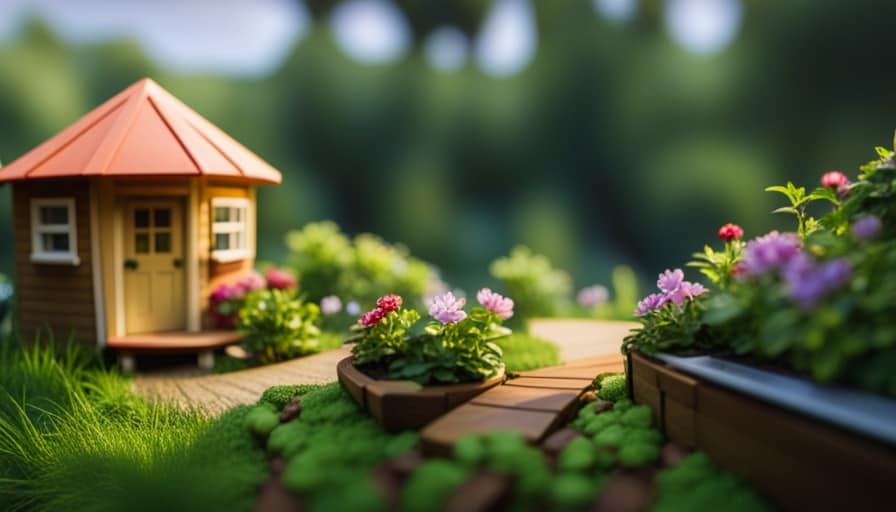
Additionally, consider the safety regulations in place for the rental. Are there smoke detectors and fire extinguishers? Is the electrical system up to code?
Lastly, think about the location of the tiny house. Does it offer privacy and tranquility? Is it conveniently located near attractions or amenities?
By considering these questions, you can ensure a memorable and enjoyable vacation in a tiny house rental.
- Is the tiny house designed with space-saving features?
- Are there safety measures in place, such as fire alarms and carbon monoxide detectors?
- How close is the tiny house to nearby attractions or amenities?
Frequently Asked Questions
Are Pets Allowed in Tiny House Rentals?
Yes, pets are allowed in our tiny house rentals. We understand that many travelers want pet-friendly accommodations and our alternative housing options cater to that. Your furry friend is welcome to join you on your vacation getaway.
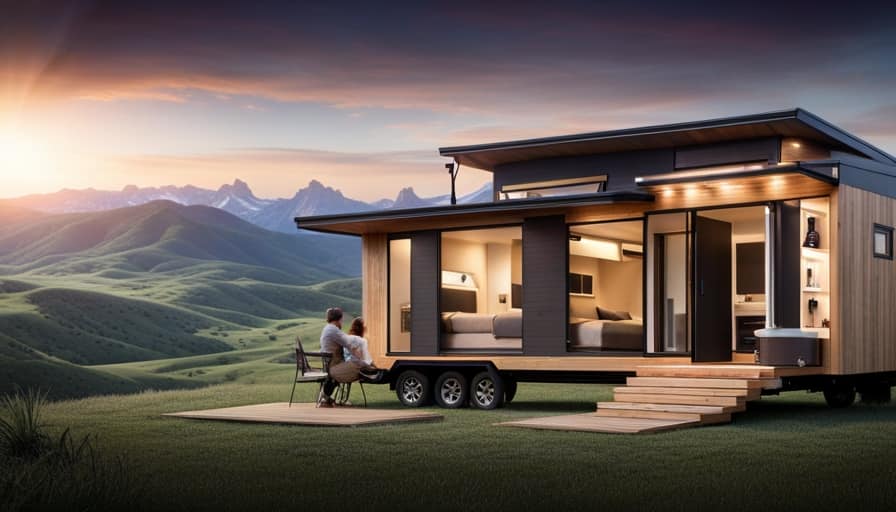
Can I Bring My Own Bedding and Towels?
Yes, you can bring your own bedding and towels. It’s like adding a personal touch to your getaway. Bringing your own bedding and towels offers the advantage of comfort and familiarity in your tiny house rental.
Are There Any Age Restrictions for Renting a Tiny House?
There are no age restrictions for renting a tiny house. However, safety regulations must be followed to ensure a secure stay for all guests. We prioritize the well-being of our visitors.
Is There a Minimum Stay Requirement for Booking a Tiny House Rental?
There is a minimum stay requirement when booking a tiny house rental. The booking process is simple and straightforward. We can assist you in finding the perfect tiny house for your vacation getaway.
Are There Any Restrictions on Cooking or Using Appliances in the Tiny House Rental?
When it comes to cooking in a tiny house rental, there may be some restrictions and appliance usage rules to keep in mind. We’ll make sure you have all the information you need for a seamless and enjoyable experience.
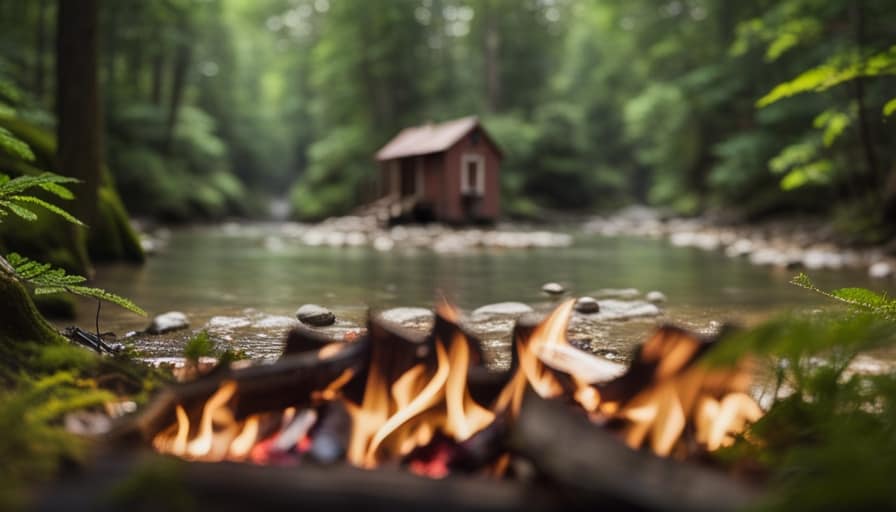
Conclusion
In conclusion, the allure of tiny house rentals lies in their ability to provide a unique and immersive vacation experience. Symbolizing a break from the ordinary, these cozy dwellings offer a chance to disconnect from the hustle and bustle of daily life.
From legal considerations to effective marketing strategies, this article has shed light on the various aspects involved in successfully venturing into the tiny house rental market. By embracing these insights and prioritizing customer satisfaction, one can unlock the full potential of this intriguing option for unforgettable vacation getaways.
I’m Theodore, and I love tiny houses. In fact, I’m the author of Tiny House 43, a book about tiny houses that are also tree houses. I think they’re magical places where imaginations can run wild and adventures are just waiting to happen.
While tree houses are often associated with childhood, they can be the perfect adult retreat. They offer a cozy space to relax and unwind, surrounded by nature. And since they’re typically built on stilts or raised platforms, they offer stunning views that traditional homes simply can’t match.
If you’re looking for a unique and romantic getaway, a tree house tiny house might just be the perfect option.
Tiny Houses
How Can I Know if the County Lets Me Build a Tiny House
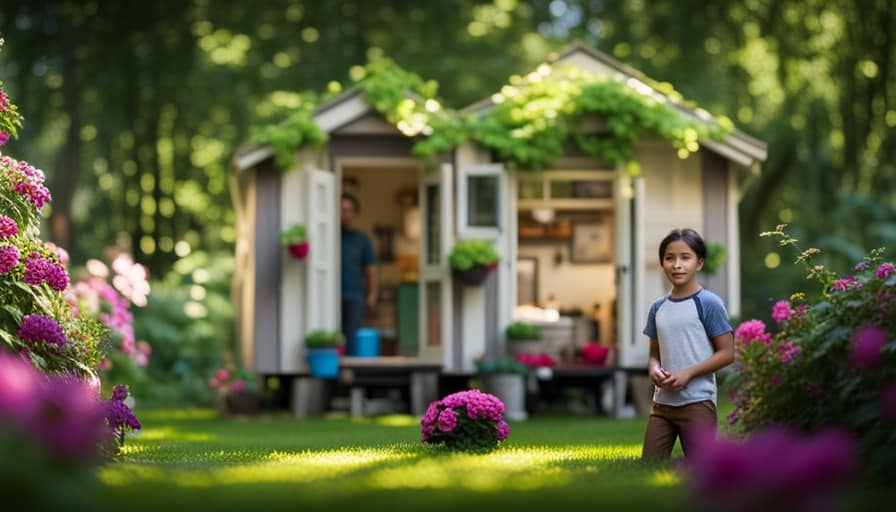
Have you ever dreamed of constructing a cozy little home for yourself, but wonder if the local authorities will give you the green light? Don’t worry! I’ll walk you through the steps to figure out if you can indeed build a tiny house in your neighborhood. Take the plunge into the world of tiny house living!
By researching local zoning and building codes, contacting the county planning department, and checking for tiny house-friendly communities, you can gain the knowledge and confidence to pursue your tiny house dreams.
Let’s explore the steps together!
Key Takeaways
- Research zoning ordinances and building codes to understand the regulations and requirements for building a tiny house in the county.
- Contact the County Planning Department to inquire about specific size, height, setback requirements, and whether a building permit is needed.
- Explore the permitting and inspection processes for building a tiny house, including obtaining necessary permits, providing detailed plans, and undergoing regular inspections.
- Check for tiny house-friendly communities that have embraced the tiny house movement and have lenient regulations for building and living in a tiny house.
Researching Local Zoning and Building Codes
I’ll start by researching the local zoning and building codes to determine if building a tiny house is allowed in the county. It’s important to be aware of potential legal obstacles before embarking on any construction project. By understanding the specific rules and regulations, I can ensure that my tiny house complies with all necessary requirements.
This research will involve looking into zoning ordinances, which dictate where certain types of housing are allowed to be built. Additionally, I’ll examine building codes to ensure that my tiny house meets the necessary safety standards.
In my research, I’ll also consider off-grid options, such as solar power or rainwater collection, to ensure that my tiny house is environmentally friendly and self-sufficient.
Contacting the County Planning Department
Before starting my tiny house project, I should reach out to the County Planning Department to inquire about the regulations and requirements for building a tiny house in the area. It is important to understand the county regulations and legal restrictions that may be in place to ensure a smooth and compliant construction process. By contacting the County Planning Department, I can gather the necessary information and guidance to proceed with my project. Here is a table summarizing the key questions to ask the department:
| Questions to Ask County Planning Department |
|---|
| What are the zoning regulations for tiny houses in the area? |
| Are there any specific size, height, or setback requirements? |
| Do I need a building permit for my tiny house? |
| Are there any legal restrictions or limitations I should be aware of? |
Checking for Tiny House-Friendly Communities
To find out if there are any communities that are friendly towards tiny houses, I can start by researching online or reaching out to local organizations and groups that support alternative housing options. When researching online, I can look for websites or forums that specifically discuss tiny house friendly regulations and zoning laws in different areas. These resources can provide valuable information on communities that have embraced the tiny house movement and may have more lenient regulations for building and living in a tiny house.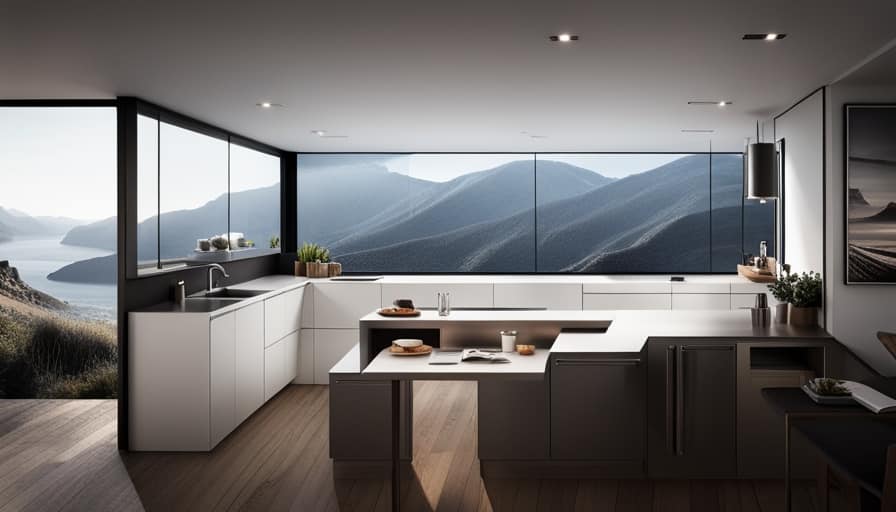
Additionally, local organizations and groups that support alternative housing options, such as sustainable living or affordable housing advocates, may be able to provide insights and recommendations on finding suitable land for a tiny house. By utilizing these resources, I can identify communities that are more likely to welcome tiny houses and provide a supportive environment for this alternative housing option.
Understanding the minimum square footage requirements is another crucial aspect to consider when exploring the feasibility of building a tiny house.
Understanding Minimum Square Footage Requirements
I need to understand the minimum square footage requirements to determine if my tiny house will comply with the county regulations.
When it comes to tiny house design and alternative housing options, one of the most important factors to consider is the minimum square footage requirement set by the county.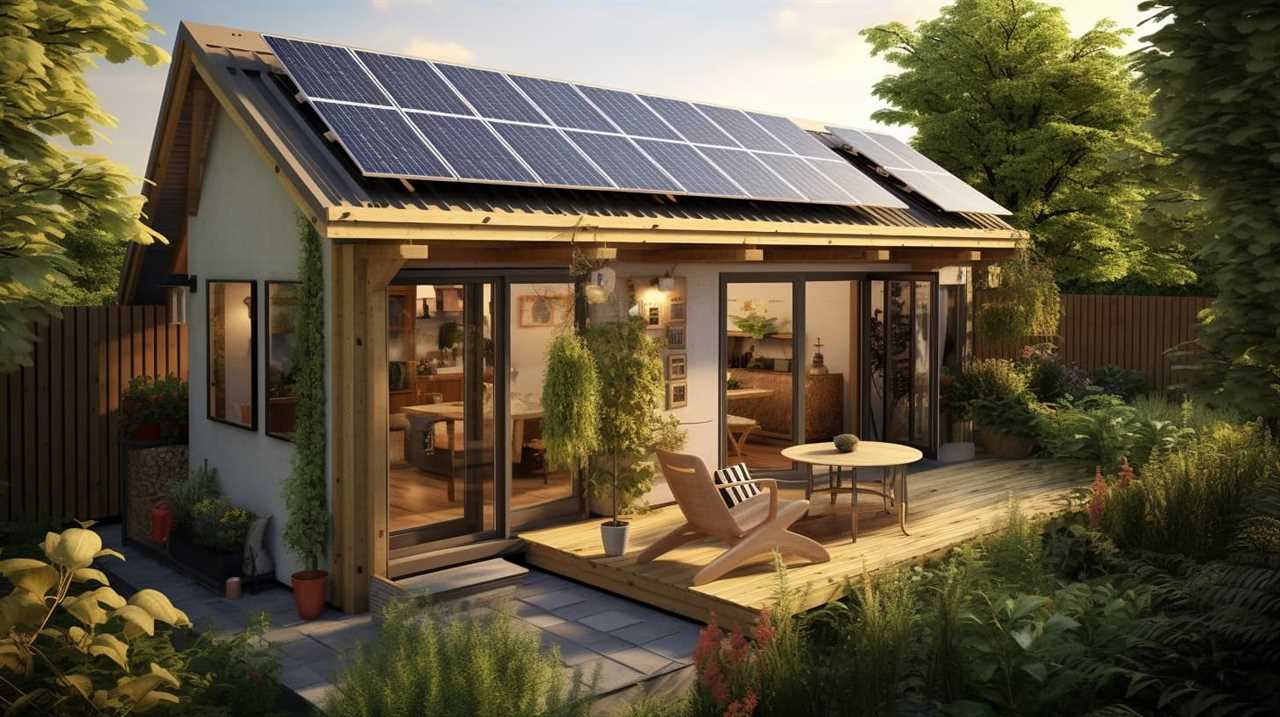
This requirement specifies the minimum size that a dwelling unit must be in order to be considered legal. It’s crucial to familiarize yourself with this requirement to avoid any potential legal issues or setbacks in the future.
By understanding the minimum square footage requirements, you can ensure that your tiny house meets the county regulations and is eligible for permits and approvals.
This knowledge won’t only help you comply with the law but also ensure the safety and livability of your tiny house.
Exploring Permitting and Inspection Processes
First, I’ll need to understand the specific permitting and inspection processes involved in building a tiny house in the county.
When exploring alternative housing options like tiny houses, it’s crucial to navigate the building permit process properly. The first step is to research the local building codes and regulations pertaining to tiny houses.
Contact the county’s building department to obtain the necessary permits and paperwork. It’s important to provide detailed plans and specifications of your tiny house to ensure compliance with safety standards.
Once the permits are obtained, the construction can begin. Throughout the building process, regular inspections will be conducted to ensure compliance with building codes and regulations.
It’s essential to follow all guidelines and regulations to avoid any legal issues or setbacks.
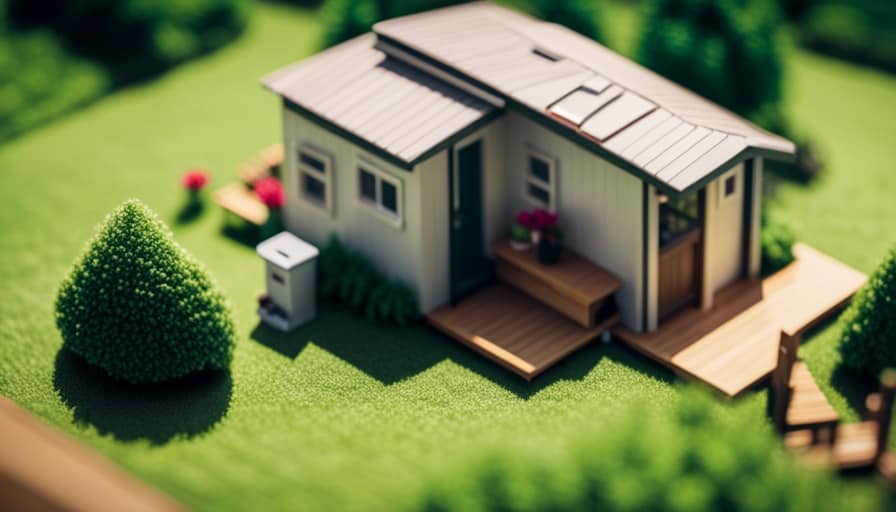
Frequently Asked Questions
Can I Build a Tiny House on Any Piece of Land in the County?
I need to check the zoning regulations and building codes in the county to determine if I can build a tiny house on any piece of land. It’s important to follow these guidelines to ensure compliance.
Are There Any Restrictions on the Design or Appearance of a Tiny House in the County?
There may be design and appearance restrictions for building a tiny house in the county. It’s important to research local zoning and building codes to determine what guidelines need to be followed.
What Are the Potential Penalties for Building a Tiny House Without Obtaining the Necessary Permits in the County?
Building a tiny house without obtaining the necessary permits in the county can lead to potential legal consequences. It is important to understand the consequences of building without permits to avoid any penalties or fines.
Are There Any Specific Requirements or Regulations for Utilities (Water, Electricity, Sewage) in the County When Building a Tiny House?
Well, there are specific regulations and utility requirements in the county when building a tiny house. It’s important to check with the county authorities to ensure you meet all the necessary criteria.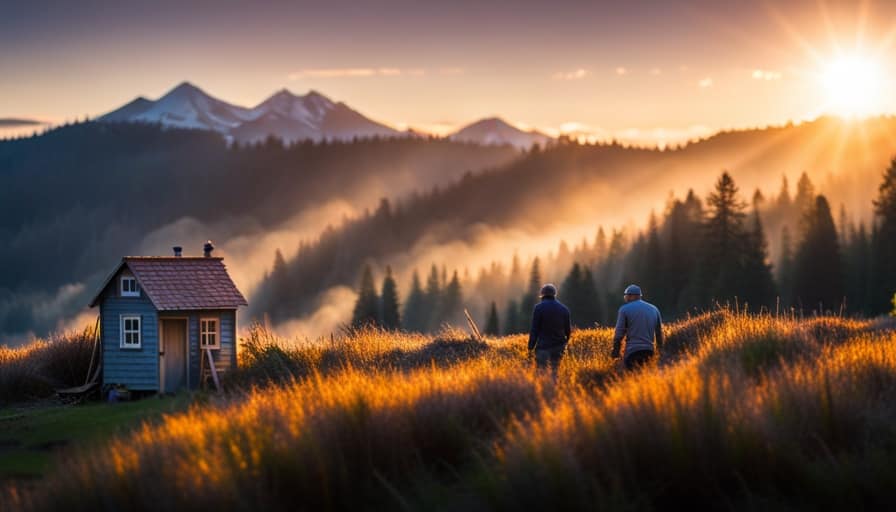
Can I Live Full-Time in a Tiny House in the County, or Are There Limitations on the Duration of Occupancy?
There may be limitations on the duration of occupancy for living full-time in a tiny house in the county. It is important to check the zoning regulations to determine any restrictions or requirements.
Conclusion
After researching local zoning and building codes, contacting the county planning department, and checking for tiny house-friendly communities, you can determine if your county permits the construction of a tiny house.
For example, in a case study, John Smith successfully built his tiny house in County X by meeting the minimum square footage requirements and navigating the permitting and inspection processes.
By following these steps and understanding the regulations in your area, you can fulfill your dream of building a tiny house.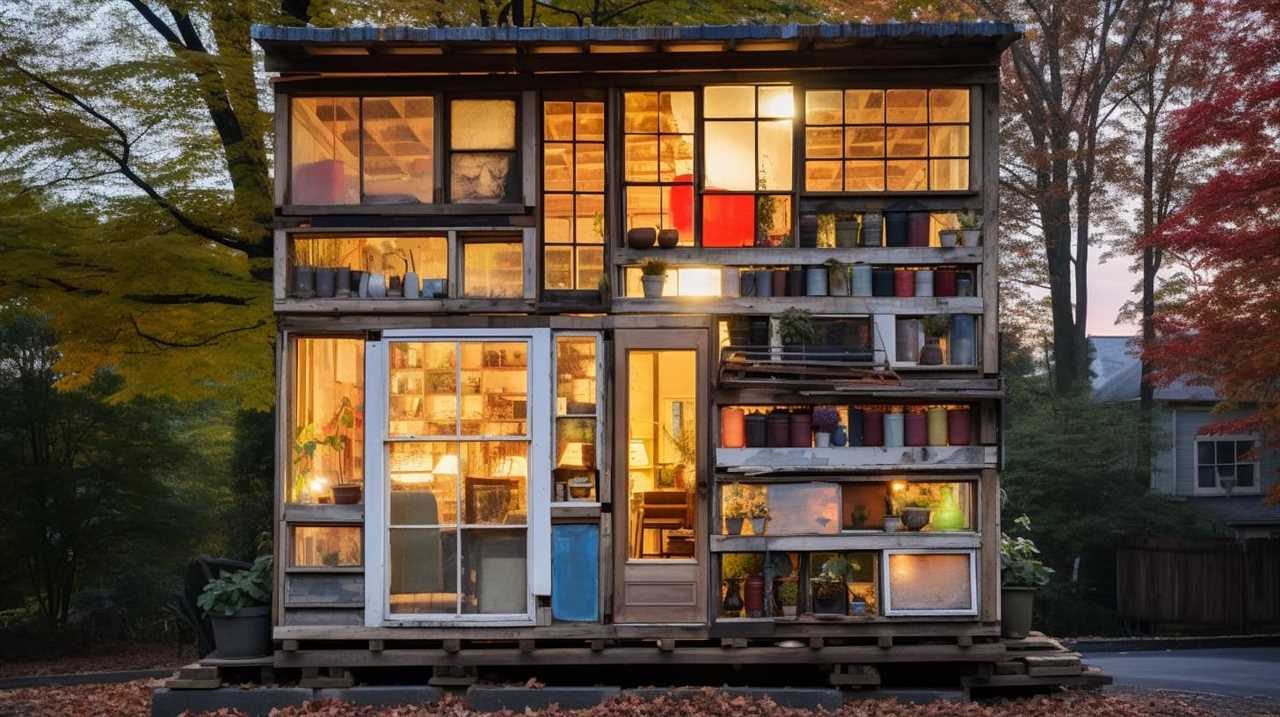
I’m Theodore, and I love tiny houses. In fact, I’m the author of Tiny House 43, a book about tiny houses that are also tree houses. I think they’re magical places where imaginations can run wild and adventures are just waiting to happen.
While tree houses are often associated with childhood, they can be the perfect adult retreat. They offer a cozy space to relax and unwind, surrounded by nature. And since they’re typically built on stilts or raised platforms, they offer stunning views that traditional homes simply can’t match.
If you’re looking for a unique and romantic getaway, a tree house tiny house might just be the perfect option.
Tiny Houses
How Can I Land Lease for a Tiny House
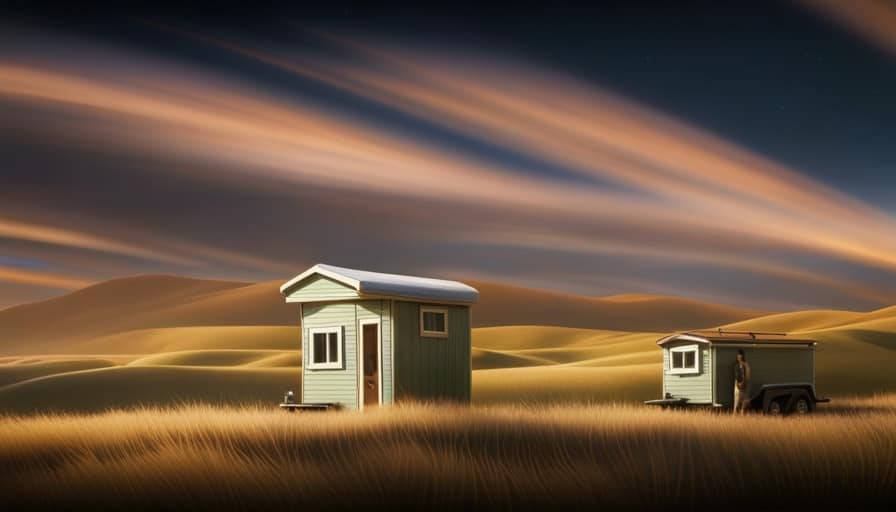
I am here to help navigate you through the thrilling realm of land leasing for your very own tiny home.
Imagine unlocking the door to your cozy, eco-friendly home nestled on a piece of land that you can call your own.
In this article, I will walk you through the basics of land leasing, help you research available options, navigate legal considerations, and find the perfect location for your tiny house dream.
Let’s embark on this journey together and secure a land lease agreement for your tiny home.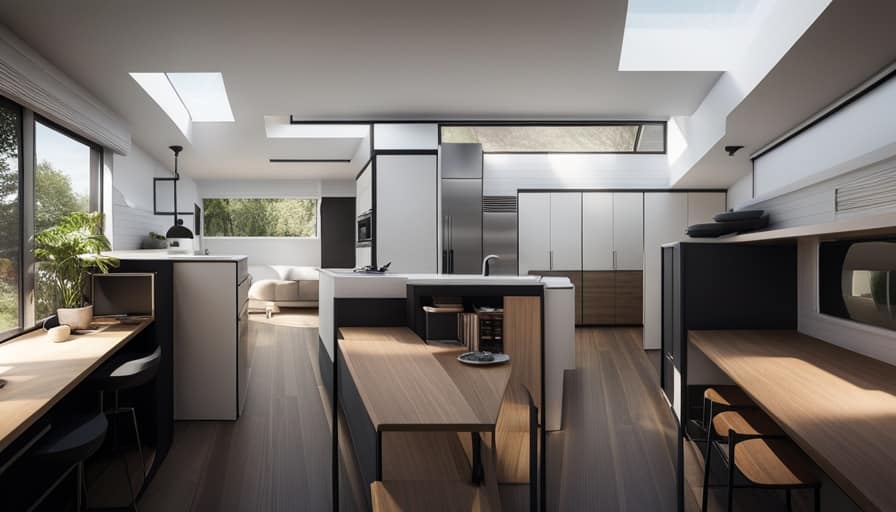
Key Takeaways
- Research local zoning laws and building codes to ensure compliance
- Explore affordable land lease options and community-based opportunities
- Understand and navigate zoning and legal considerations for tiny house land leasing
- Consider location factors such as proximity to services and amenities when searching for land to lease
Understanding the Basics of Land Leasing for a Tiny House
I can provide you with some key information on how to secure a land lease for a tiny house.
When it comes to understanding the basics of land leasing, there are two important factors to consider: researching regulations and financial considerations.
Researching regulations is crucial in order to ensure that you’re compliant with local zoning laws and building codes. Different areas may have specific requirements for the placement and construction of tiny houses.
Additionally, it’s important to understand the financial considerations involved in land leasing. This includes not only the cost of the lease itself, but also any additional fees or expenses that may be associated with the property.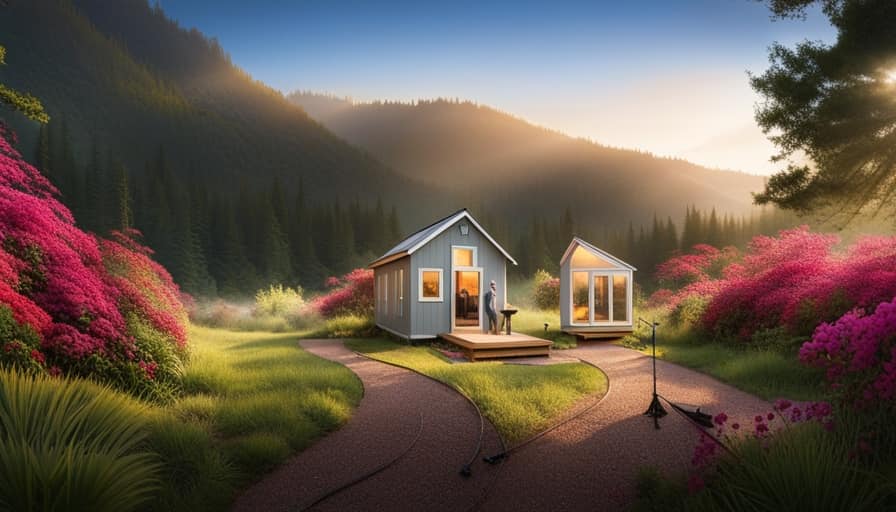
It’s essential to thoroughly research and understand these factors before entering into a land lease agreement for your tiny house.
Researching Available Land Lease Options for Tiny Homes
Before making a decision, it’s important to thoroughly research and compare the available land lease options for tiny homes. This will ensure that you find the best fit for your needs and budget. When researching, consider the following options:
-
Finding affordable land lease options for tiny homes: Look for land lease opportunities that offer reasonable rates and terms. This will help you keep your expenses low and make your tiny house living more affordable.
-
Exploring community-based land lease opportunities for tiny houses: Consider joining a community that’s specifically designed for tiny house living. These communities often have land lease options available and offer a sense of community and support.
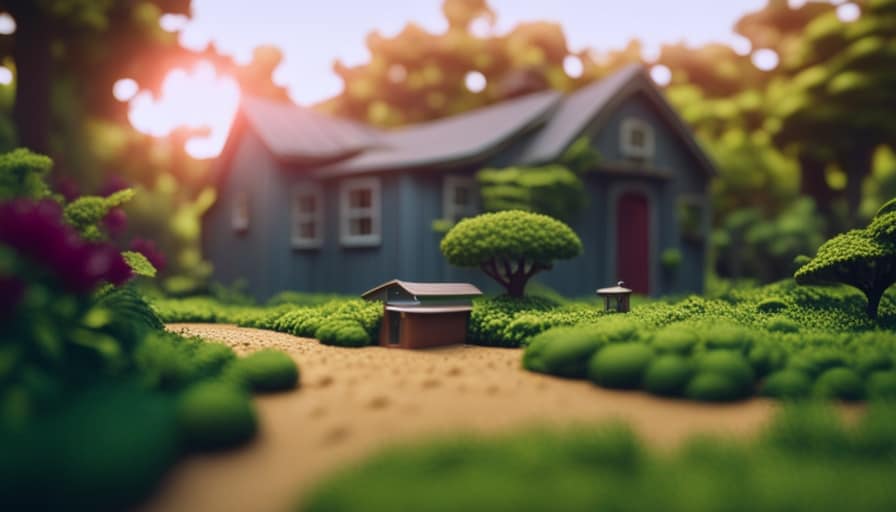
-
Checking local zoning and regulations: Before committing to a land lease, make sure to research the local zoning and regulations regarding tiny homes. Ensure that the land you’re considering is zoned for tiny houses and that there are no restrictions that would prevent you from living in your tiny home.
-
Reading reviews and testimonials: Take the time to read reviews and testimonials from others who’ve leased land for their tiny homes. This will give you valuable insights into the experience and help you make an informed decision.
Navigating Zoning and Legal Considerations for Tiny House Land Leasing
When navigating zoning and legal considerations for tiny house land leasing, it’s important to understand the regulations and restrictions in place as well as the necessary permits and approvals.
Zoning restrictions vary from one location to another, so it’s crucial to research and understand the specific regulations of the area where you plan to lease land for your tiny house. Some areas may have minimum square footage requirements or specific building codes that must be followed.
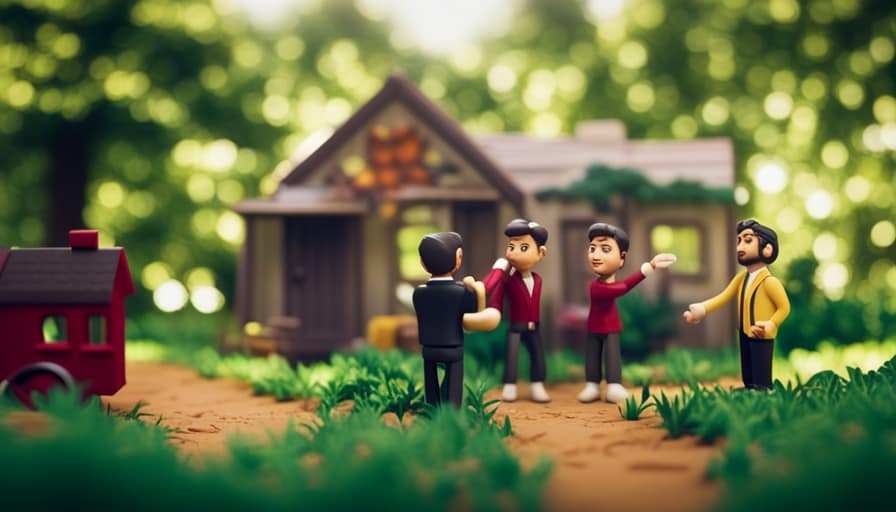
Additionally, legal requirements such as obtaining permits and approvals from local authorities may be necessary before you can lease land for your tiny house. By adhering to these regulations and obtaining the necessary permits, you can ensure a smooth and legal process for land leasing.
Now that we understand the zoning and legal considerations, let’s explore how to find the perfect location for land leasing a tiny house.
Finding the Perfect Location for Land Leasing a Tiny House
To find the perfect location for land leasing a tiny house, consider the amenities and proximity to essential services. When searching for a spot to lease for your tiny house, keep in mind the following factors:
-
Budget-friendly options: Look for locations that offer affordable leasing rates, allowing you to make the most of your budget.
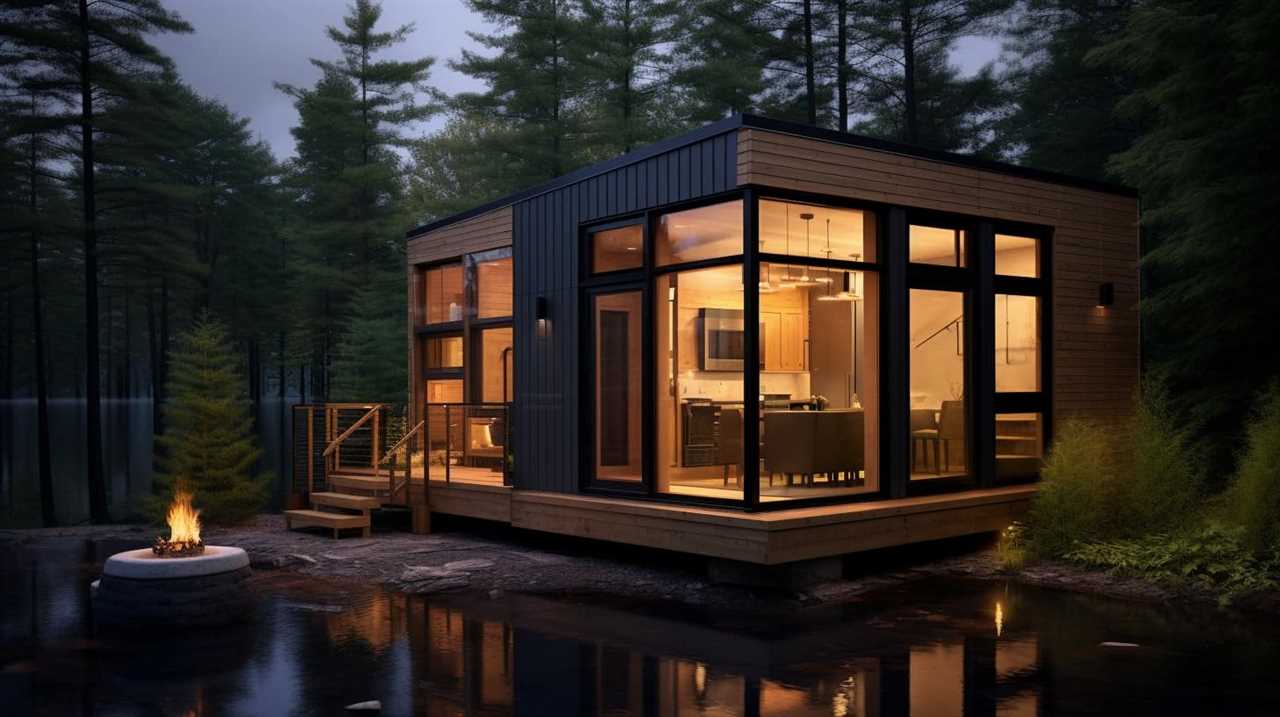
-
Access to essential services: Ensure the location is close to essential services such as grocery stores, medical facilities, and schools, providing convenience for daily needs.
-
Off-grid possibilities: If you’re considering living off-grid, look for locations that allow for alternative energy sources, such as solar panels or wind turbines.
-
Natural surroundings: Consider leasing land in areas with beautiful scenery, such as near a lake or in the mountains, allowing you to enjoy a peaceful and serene environment.
Securing a Land Lease Agreement for Your Tiny Home
After researching potential landlords and discussing my needs, I was able to secure a land lease agreement for my tiny home. Finding landowners who are open to leasing their property for a tiny house can be a challenge, but with persistence and thorough research, it’s possible to find a suitable arrangement.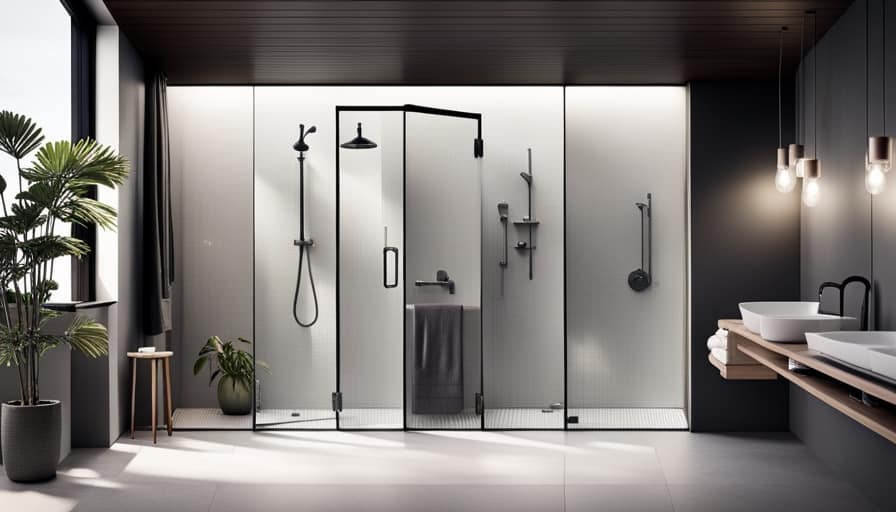
When approaching landowners, it’s important to present yourself as a responsible and reliable tenant, emphasizing the benefits of having a tiny house on their property, such as additional income or increased security. Negotiating the terms of the lease agreement is crucial to ensure that both parties are satisfied. This includes discussing the duration of the lease, rent payments, and any restrictions or permissions regarding the use of the land.
Frequently Asked Questions
Can I Lease Land for a Tiny House in a Residential Neighborhood?
I can lease land for a tiny house in a residential neighborhood. However, it is important to consider the residential zoning and community regulations that may restrict this type of arrangement.
What Are the Typical Costs Associated With Leasing Land for a Tiny House?
When considering leasing land for a tiny house, cost considerations and finding suitable land are crucial. It’s important to research zoning regulations, negotiate a fair lease agreement, and budget for expenses like utilities and maintenance.
Are There Any Restrictions on the Size or Design of a Tiny House When Leasing Land?
When leasing land for a tiny house, it’s important to consider any size or design restrictions that may be in place. These restrictions can vary depending on the location and regulations set by the landowner or local authorities.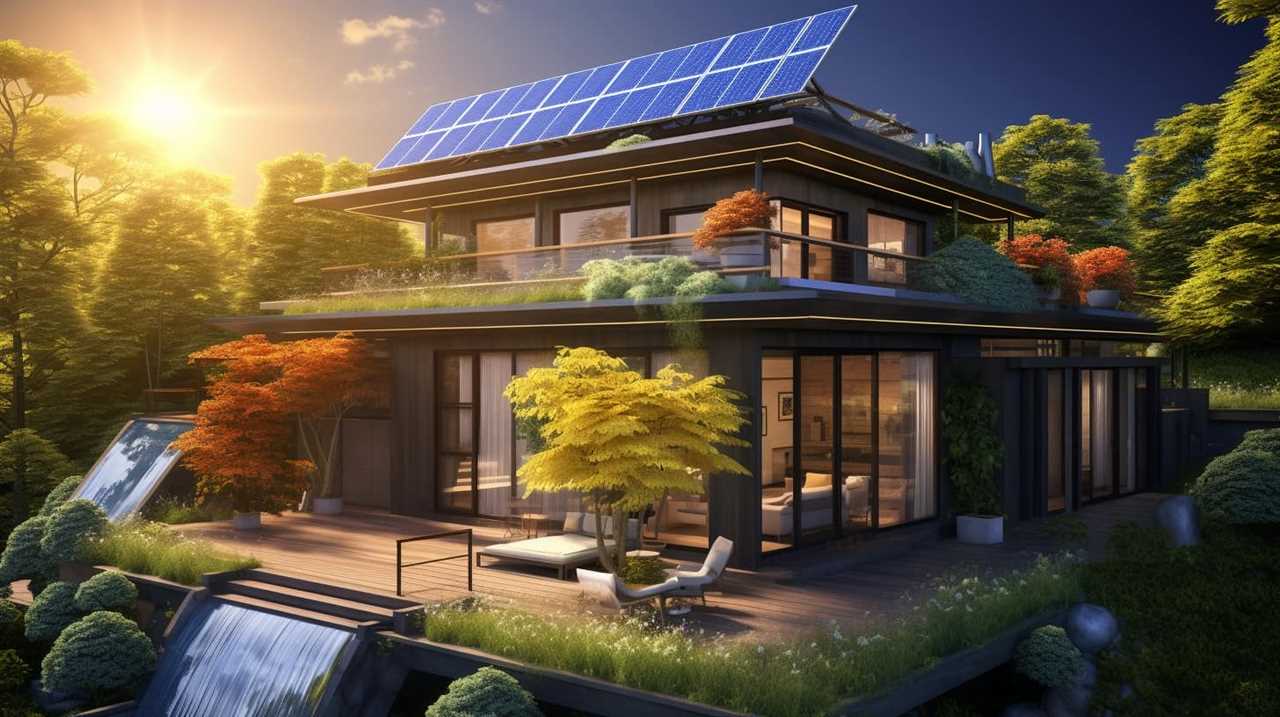
How Long Does a Land Lease Agreement for a Tiny House Typically Last?
Typically, a land lease agreement for a tiny house lasts for a specific duration, like a year or two. However, it can be renewed if both parties agree. It’s important to discuss lease terms and renewal options with the landowner.
Are There Any Specific Insurance Requirements for Leasing Land for a Tiny House?
There are specific insurance requirements for leasing land for a tiny house. As a landlord, you may require insurance coverage to protect your property. It’s important to discuss these requirements with your potential tenants.
Conclusion
In conclusion, landing a land lease for a tiny house requires thorough research, understanding zoning laws, and finding the perfect location.
It may seem like a daunting process, but with determination and the right resources, you can secure a land lease agreement for your tiny home.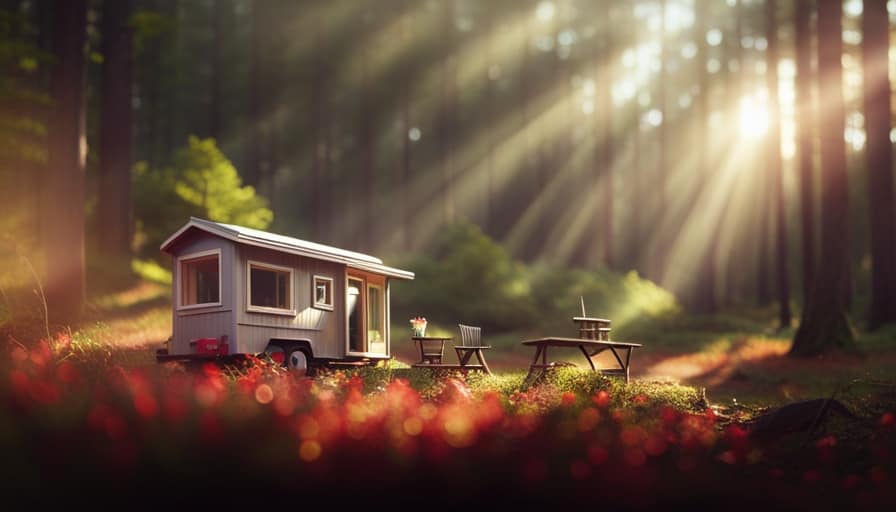
Remember, Rome wasn’t built in a day, and neither is finding the perfect spot for your tiny house. So, don’t rush the process and take your time to ensure a successful land lease for your dream tiny home.
I’m Theodore, and I love tiny houses. In fact, I’m the author of Tiny House 43, a book about tiny houses that are also tree houses. I think they’re magical places where imaginations can run wild and adventures are just waiting to happen.
While tree houses are often associated with childhood, they can be the perfect adult retreat. They offer a cozy space to relax and unwind, surrounded by nature. And since they’re typically built on stilts or raised platforms, they offer stunning views that traditional homes simply can’t match.
If you’re looking for a unique and romantic getaway, a tree house tiny house might just be the perfect option.
-

 Beginners Guides7 days ago
Beginners Guides7 days agoHow To Buy A Tesla Tiny House
-

 Energy Efficiency1 month ago
Energy Efficiency1 month agoBest Tiny Homes For Cold Climates
-

 Beginners Guides3 days ago
Beginners Guides3 days agoTiny House Nation Where Are They Now Stephanie
-

 Tiny House Resources (e.g., legalities, cost, insurance, FAQs)2 months ago
Tiny House Resources (e.g., legalities, cost, insurance, FAQs)2 months agoDo Tiny Homes Need Planning Permission?
-

 Beginners Guides2 weeks ago
Beginners Guides2 weeks agoFrom The Show Tiny House Nation How Many Keep Their Tiny House?
-

 Beginners Guides2 months ago
Beginners Guides2 months agoUsing a Climbing Net For Treehouse Construction
-

 Beginners Guides2 months ago
Beginners Guides2 months agoHow to Build a Treehouse Without Drilling Into the Tree
-

 Beginners Guides2 weeks ago
Beginners Guides2 weeks agoTiny House Nation Who Pays For The Houses












